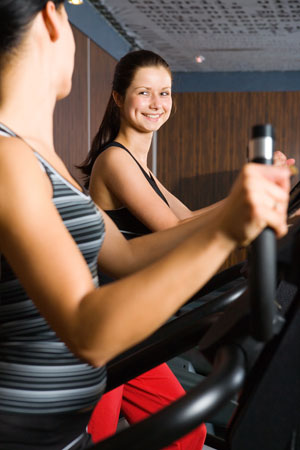 With the excitement of the New Year fading, you may be finding it harder to stick to those resolutions to lose weight or get to the gym more. But keeping a regular exercise routine throughout the winter can minimize your risk of catching the cold and flu, as well as prevent weight gain, chronic pain flare-ups, and seasonal depression.
With the excitement of the New Year fading, you may be finding it harder to stick to those resolutions to lose weight or get to the gym more. But keeping a regular exercise routine throughout the winter can minimize your risk of catching the cold and flu, as well as prevent weight gain, chronic pain flare-ups, and seasonal depression.
Don’t let busy schedules and dropping temperatures get in the way of your workout. Here are some tips for staying motivated and fit throughout the winter.
- Try something new. Sure you may not feel like lacing up your running shoes in frigid temperatures, so why not turn to an indoor activity you’ve always wanted to try? Switching up your workout routine will ramp up your calorie burn and help you develop new muscles–plus, it’s more interesting than endless hours of the treadmill. Yoga, Pilates, Zumba, CrossFit, swimming, and weight training can all be done in any season.
 Bring a friend. A recent study shows that women who workout with a friend or in an exercise class burn up to 256 more calories per a session than women who exercise alone. Women who brought along a friend tended to work out more often and for longer.
Bring a friend. A recent study shows that women who workout with a friend or in an exercise class burn up to 256 more calories per a session than women who exercise alone. Women who brought along a friend tended to work out more often and for longer.- Squeeze more activity throughout your day. Finding little ways to be more active throughout the day can add up. Pace or walk around the house while you’re on the phone; take the stairs instead of the elevator; walk over to a co-worker’s desk instead of just sending an email; and park further away from your destination.
- Turn your TV time into core workout. Yes, you can watch The Big Bang Theory while holding a 60-second plank. Talk to your chiropractor for ideas about simple, effective core workouts.
- Pack your own lunch. Getting take-out may seem like a harmless solution for lunch, but research shows that eating out more than twice a week is tied to increased insulin resistance and weight gain. Restaurant foods are higher in fat, calories, and portion sizes; and since you may not be as active as you normally are in the warmer months, all those extra calories can easily turn into pounds. Preparing your own lunches at home will allow you to control the portions and make healthy choices.
- See a chiropractor. Whether you’re an athlete or an exercise newbie, your chiropractor can help you avoid muscles, strains, sprains, and tears that are all too common when you change your workout regime. Research has shown that regular chiropractic adjustments reduced the risk of lower limb injuries in Australian elite football players. Chiropractic may also help to improve athletic performance, some studies suggest.
